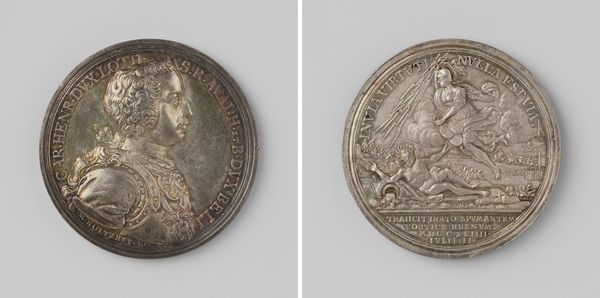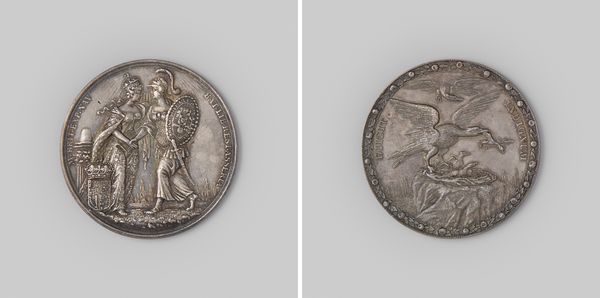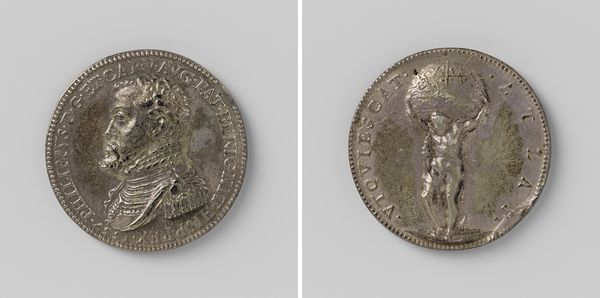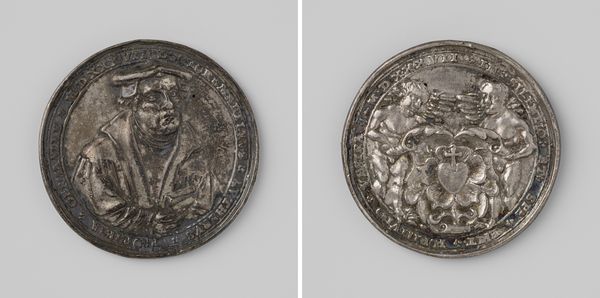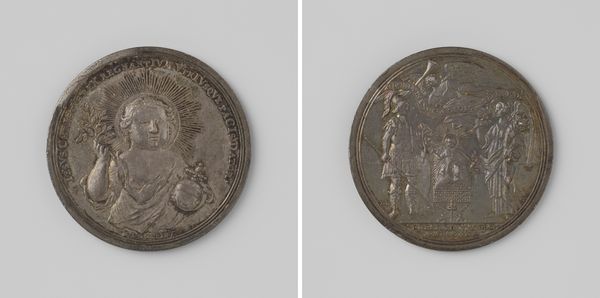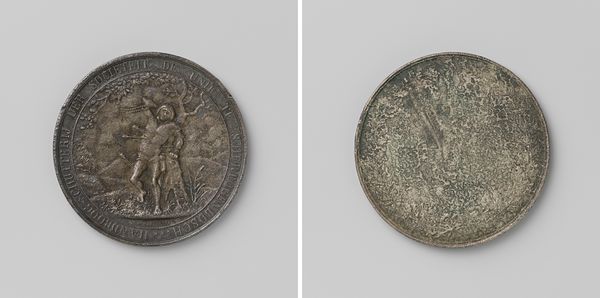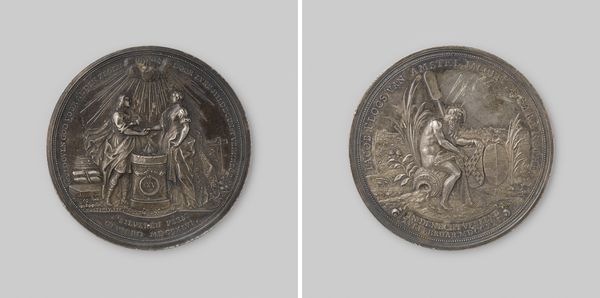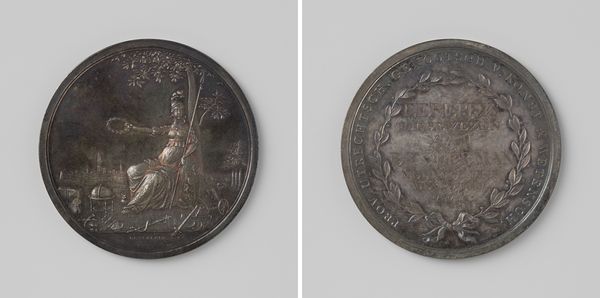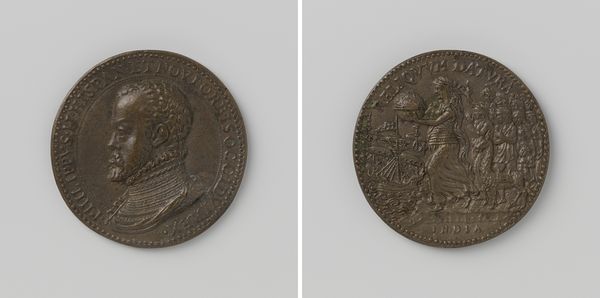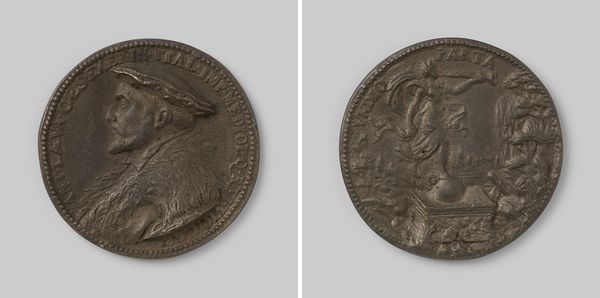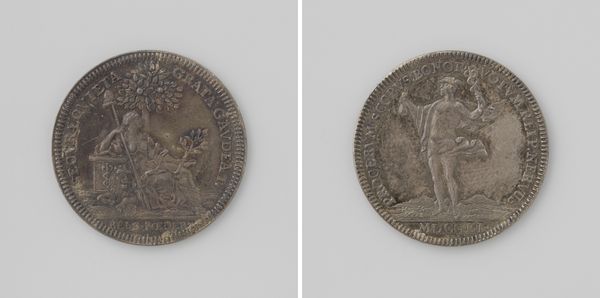
Kardinaal Granvelle overhandigt de gewijde standaard aan don Juan van Oostenrijk voor de oorlog tegen de Turken 1571
0:00
0:00
metal, relief
#
portrait
#
metal
#
relief
#
mannerism
#
figuration
#
11_renaissance
#
history-painting
Dimensions: diameter 4.2 cm, weight 32.82 gr
Copyright: Rijks Museum: Open Domain
Curator: What immediately strikes me is the cold, metallic nature of this object. Its pale surface and sharply rendered forms exude an almost chilling sense of formality. Editor: Indeed. This is a metal relief from 1571 depicting "Cardinal Granvelle Handing the Sacred Standard to Don John of Austria Before the War Against the Turks," and that chilling formality speaks volumes about the political and religious climate of the time. This act symbolizes a crucial moment within the broader narrative of the Holy League's fight against the Ottoman Empire. It’s a visual encapsulation of power dynamics and the church's role in instigating military action. Curator: Considering it's a relief on metal, probably either silver or some alloy emulating silver, I'm drawn to the craftsmanship involved. Look at the precision in rendering the figures, especially Granvelle's profile, and then consider how such details were achieved. What tools were employed? Who were the artisans capable of this level of work, and what were their social and economic circumstances? The piece hints at a complex system of labor and production. Editor: Precisely. Furthermore, it embodies a perfect storm of intersectionality: religious zealotry clashing with imperial ambitions, filtered through the lens of early modern European identity. Don Juan, representing burgeoning Habsburg power, is essentially being given divine sanction for a military campaign—it all hinges on faith, power, and identity working in perfect accord to stoke what we'd consider a war of civilization. Curator: And it raises further questions about how meaning is imbued through materials. Would the impact be the same if it were sculpted from wood or painted on canvas? The very choice of metal suggests permanence and authority, elevating a historical moment to something of lasting significance, and implicitly communicating it to those capable of commissioning such an object. Editor: Absolutely. The materiality underscores the power dynamics represented. But let’s not forget the Ottoman perspective; these crusades are by no means objective, apolitical events. A relief such as this—intended, at least in part, as propaganda—tells as much about those represented within it as those intentionally left out. The creation of ‘us’ inevitably relies upon constructing a ‘them’. Curator: So, seeing the level of material and artistic control invested into this single piece forces us to examine its significance in the early modern theater of European power. Editor: Agreed, a metallic artifact born of war and religion. Its reflection, though silvery and bright, mirrors a deeply complex and often troubling historical reality.
Comments
No comments
Be the first to comment and join the conversation on the ultimate creative platform.
